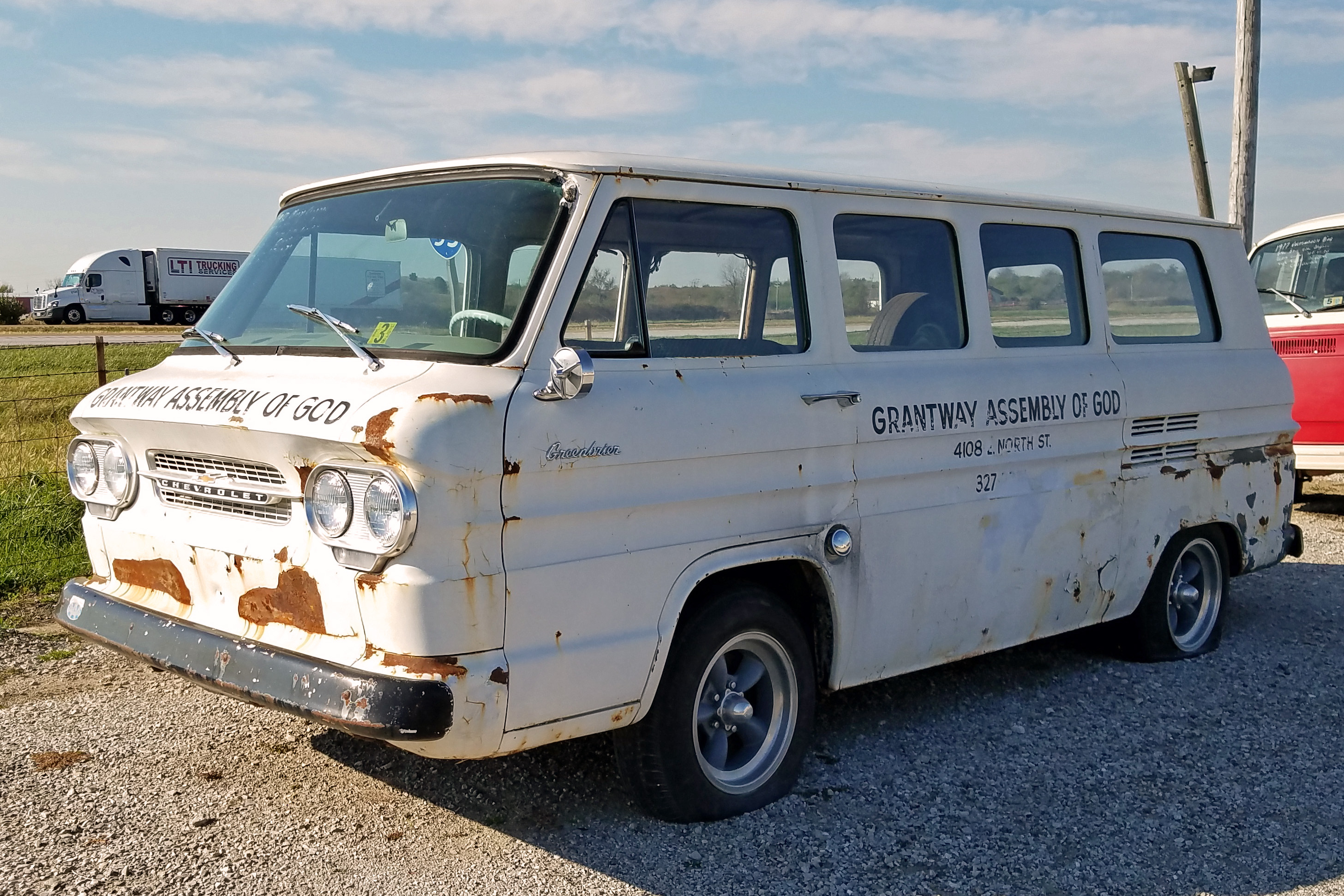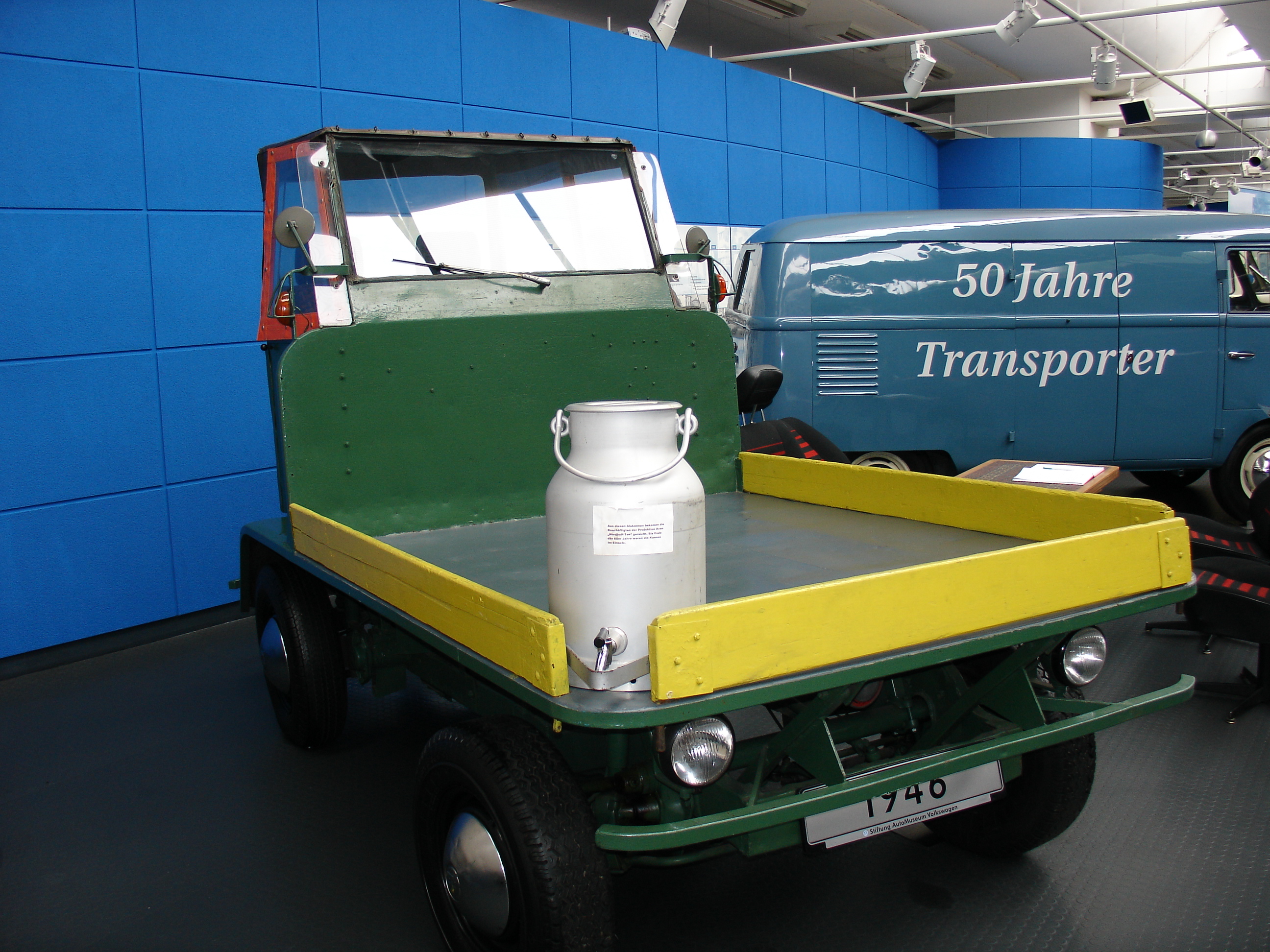|
Chrysler S Platform
The first-generation Chrysler minivans are a series of minivans produced and marketed by the Chrysler Corporation from the 1984 to the 1990 model years. Introduced as the first minivans from an American-brand manufacturer and popularizing the minivan as a vehicle, the Dodge Caravan and Plymouth Voyager were launched ahead of chief competitors Chevrolet Astro/GMC Safari and Ford Aerostar. Using the front-wheel drive Chrysler S platform, the minivans were produced in both passenger and cargo configurations. Initially offered in a single wheelbase, a longer-wheelbase Grand Caravan/Grand Voyager was introduced for 1987. For 1988, the Chrysler Voyager was introduced for export sale (mainly to Europe), intended as a competitor for the Renault Espace. For the final year of the generation, the luxury-oriented Chrysler Town & Country was introduced. Chrysler manufactured the S-platform minivans in the United States and Canada in its Saint Louis Assembly (Fenton, Missouri) and Windsor Ass ... [...More Info...] [...Related Items...] OR: [Wikipedia] [Google] [Baidu] |
Chrysler Corporation
FCA US, LLC, doing business as Stellantis North America and known historically as Chrysler ( ), is one of the " Big Three" automobile manufacturers in the United States, headquartered in Auburn Hills, Michigan. It is the American subsidiary of the multinational automotive company Stellantis. Stellantis North America sells vehicles worldwide under the Chrysler, Dodge, Jeep, and Ram Trucks nameplates. It also includes Mopar, its automotive parts and accessories division, and SRT, its performance automobile division. The division also distributes Alfa Romeo, Fiat, and Maserati vehicles in North America. The original Chrysler Corporation was founded in 1925 by Walter Chrysler from the remains of the Maxwell Motor Company. In 1998, it merged with Daimler-Benz, which renamed itself DaimlerChrysler but in 2007 sold off its Chrysler stake. The company operated as Chrysler LLC through 2009, then as Chrysler Group LLC. In 2014, it was acquired by Fiat S.p.A.; it subsequently operated as ... [...More Info...] [...Related Items...] OR: [Wikipedia] [Google] [Baidu] |
Ford Aerostar
The Ford Aerostar is a range of vans that was manufactured by Ford from the 1986 to the 1997 model years. The first minivan produced by Ford, the model line was marketed against the Chevrolet Astro/GMC Safari and the first two generations of the Chrysler minivans. Introduced shortly before the Ford Taurus, the Aerostar derived its name from its slope-nosed "one-box" exterior (although over six feet tall, the body of the Aerostar retained a , besting the Lincoln Mark VII). The first minivan powered exclusively by V6 engines, the Aerostar was also one of the first vehicles to introduce all-wheel drive to the segment in North America. The model line was sold in multiple configurations, including passenger and cargo vans, along with an extended-length body. Sold primarily in the United States and Canada, a limited number of vehicles were exported outside of North America. The front-wheel drive Ford Windstar was introduced for the 1995 model year as the Aerostar's intended replacem ... [...More Info...] [...Related Items...] OR: [Wikipedia] [Google] [Baidu] |
Ford Carousel
The Ford Carousel (also spelled Carrousel) is a prototype vehicle that was developed by Ford in 1973. A derivative of the third-generation Ford Econoline/Club Wagon, the Carousel explored a number of the concepts that 1980s American-market minivans later put into production, serving as an alternative to both full-size station wagons and passenger vans. Called a "garageable family van", the Carousel featured two-box design (as opposed to the one-box configuration of the Volkswagen Microbus) and three-row forward-facing seating. Designed and styled by Dick Nesbitt (designer of the Ford Mustang II), the Carousel prototype was built for Ford by Carron & Company of Inkster, Michigan. Development In 1972, Ford truck designers had begun final design work on the "Nantucket" design program, the codename for the 1975 Ford Econoline/Club Wagon. While moving its engine several inches forward would increase passenger space significantly, the body height of most versions of the Club Wagon we ... [...More Info...] [...Related Items...] OR: [Wikipedia] [Google] [Baidu] |
Lynn Townsend
Lynn Alfred Townsend (May 12, 1919 – August 17, 2000) was an American automobile executive widely known for serving as president, chairman, and chief executive of the Chrysler Corporation. Early life Towsend was born to Lynn A. and Georgia E. (Crandall) Townsend on May 12, 1919, in Flint, Michigan. The family moved to Beverly Hills, California in hopes the climate would improve his mother's asthma. Georgia Townsend died in 1929 and Lynn Sr. died five years later. Townsend moved to Evansville, Indiana to live with an uncle, North I. Townsend, who was a comptroller. Townsend graduated from high school two years ahead of his class and worked as a teller at the National City Bank for a year after graduating to pay for college. He earned a Bachelor of Arts degree from the University of Michigan in 1940 and a master's in business administration from the same school the following year. On September 14, 1940, Townsend married Ruth M. Laing. They had three sons. Career While in college ... [...More Info...] [...Related Items...] OR: [Wikipedia] [Google] [Baidu] |
Clay Modeling
Clay modeling (or clay model making) for automobile prototypes was first introduced in the 1930s by automobile designer Harley Earl, head of the General Motors General Motors Company (GM) is an American Multinational corporation, multinational Automotive industry, automotive manufacturing company headquartered in Detroit, Michigan, United States. The company is most known for owning and manufacturing f ... styling studio (known initially as the Art and Color Section, and later as the Design and Styling Department). Industrial plasticine, or "clay", which is used for this purpose, is a malleable material that can be easily shaped, thus enabling designers to create models to visualize a product. Clay modeling was soon adopted throughout the industry and remains in use today. References External links General Motors – Car Design History 1930s introductions Vehicle design Modelling clay {{Automotive-tech-stub ... [...More Info...] [...Related Items...] OR: [Wikipedia] [Google] [Baidu] |
Chevrolet Greenbrier
The Chevrolet Corvair 95 is a subseries of the Chevrolet Corvair line produced from 1961 until 1965. It is the general term applied to the van and pickup truck variants of the rear-engined Corvair, named for their shortened wheelbase. It was Chevrolet’s first attempt at a van as well as their first and only van-based pickup truck in North America. __TOC__ Overview Chevrolet introduced the Corvair lineup for the 1960 model year as the first of a series of generations of passenger compact cars. Chevrolet introduced a more utilitarian style of vehicle the following year under the model designation "Corvair 95". In appearance and design, the cars were similar to the competing Volkswagen Transporter, which was essentially a bus-like adaptation of the Volkswagen Beetle that moved the driver over the front wheels, known as ''forward control'' or ''cab-over''. The Air cooling, air-cooled horizontally opposed Chevrolet Turbo-Air 6 engine was located in the rear of the vehicle under ... [...More Info...] [...Related Items...] OR: [Wikipedia] [Google] [Baidu] |
Ford Econoline
The Ford E-Series (also known as the Ford Econoline, Ford Econovan or Ford Club Wagon) is a range of full-size vans manufactured and marketed by the Ford Motor Company. Introduced for 1961 as the replacement of the Ford F-Series panel van, four generations of the model line have been produced. Marketed for both cargo and passenger transport, the E-Series has had multiple designs for both retail and commercial sale, including vans, and commercial-grade cutaway van chassis and stripped chassis (a chassis without bodywork). With over 8.2 million units sold since 1961, the Ford E-Series is the third-best selling van line in history (outranked only by the Ford Transit and Volkswagen Transporter). Ford retired the E-Series passenger and cargo vans after 2014, replacing them with the Ford Transit. The E-Series remains offered exclusively in cutaway and stripped-chassis configurations. In 2021, the model line became the second existing Ford line to enter its 60th year of production. ... [...More Info...] [...Related Items...] OR: [Wikipedia] [Google] [Baidu] |
Dodge A100
The A100 is a range of compact vans and trucks manufactured and marketed from 1964 to 1970 by Chrysler Corporation under the Dodge marque in the United States and the Fargo marque in Canada. The A100 competed with the Ford Econoline, Chevrolet Van, Chevy Corvair Greenbrier, and the Volkswagen Type 2. The range included a pickup truck and van, both with a " forward control" design. Placing the driver on top of the front axle with the engine between the front seats, just behind the front wheels makes it a "cab over" vehicle. The unibody vehicles used a short wheelbase. An A108 was also available from 1967 to 1970, with a longer wheelbase. The A108 was popular with camper conversion companies. A substantially modified, Hemi-powered A100 wheelstanding exhibition pickup called the "Little Red Wagon" driven by Bill "Maverick" Golden was a popular drag strip attraction from the 1960s to the early 2000s. Engines *1964–1966 170 in3 (2.8 L) '' Slant-6'' I6, *1970 ... [...More Info...] [...Related Items...] OR: [Wikipedia] [Google] [Baidu] |
Chrysler A Platform
The Chrysler A platform was the basis for smaller rear wheel drive cars in the 1960s. These cars are sometimes referred to as A-body cars. Cars using the A platform in various markets around the world include: * 1960–1976 Plymouth Valiant * 1960–1981 Chrysler Valiant * 1961–1962 Dodge Lancer * 1961–1963 DeSoto Rebel * 1963–1976 Dodge Dart * 1964–1969 Plymouth Barracuda * 1971–1976 Plymouth Scamp * 1970–1976 Plymouth Duster * 1971–1972 Dodge Demon * 1971–1978 Valiant Charger * 1969–1970 Valiant VF * 1970–1971 Valiant VG This list is not complete: A-platform vehicles not included on this list were sold in some countries until 1981. Wheelbases: * 106.5 in ** 1960–1962 Valiant, Chrysler Valiant, and Plymouth Valiant (worldwide) ** 1961–1962 Dodge Lancer ** 1961–1963 DeSoto Rebel (South Africa) * 106 in ** 1963–1966 Plymouth Valiant (USA, Mexico, Europe) ** 1964–1966 Plymouth Barracuda ** 1963–1966 Dodge Dart wagon ** 1965 V ... [...More Info...] [...Related Items...] OR: [Wikipedia] [Google] [Baidu] |
Chrysler C Platform
Chrysler's C platform was the basis for rear wheel drive full-size cars from 1965 to 1978. Although often misclassified, 1964 and earlier full-size Chrysler products, and 1966 and earlier Imperials are not C-bodies. History C-bodies were built between 1965 and 1978. They had wheelbases ranging from 119 to 124 inches, they were generally loaded with features, and all C-Body cars used a torsion bar front suspension design. In 1969, Chrysler redesigned the C-Body platform to incorporate its new "Fuselage" styling that brought the upper and lower sections of body into one uniformly shaped design, in turn changing the look of all the models. This new C-Body design saw Chrysler ditching the last stylistic remnants of the early-to-mid 1960s in favor of a more contemporary silhouette. These emphasized luxury over performance. However, due to economic turmoil and an auto industry reeling from a one-two punch of federal regulation and skyrocketing gas prices, Chrysler's sales dipped and p ... [...More Info...] [...Related Items...] OR: [Wikipedia] [Google] [Baidu] |
Volkswagen Type 2
The Volkswagen Transporter, initially the Type 2, is a range of light commercial vehicles, built as vans, pickups, and cab-and-chassis variants, introduced in 1950 by the German automotive industry, automaker Volkswagen as their second mass-production car model, light motor vehicle series, and inspired by an idea and request from then-Netherlands-VW-importer Ben Pon Sr., Ben Pon. Known officially (depending on body type) as the Transporter, Kombi or Microbusor informally as the Volkswagen Station Wagon (US), Bus (also US), Camper (UK) or Bulli (Germany), it was initially given the factory designation 'Type 2', as it followedand was for decades based onthe Volkswagen Beetle, original 'Volkswagen' ("People's Car"), which became the VW factory's 'Type 1' after the World War Two, post-war reboot, and mostly known, in many languages, as the "Beetle". The Volkswagen Transporter has been built in many variants. It may be best known for its panel vans, but it was also b ... [...More Info...] [...Related Items...] OR: [Wikipedia] [Google] [Baidu] |





